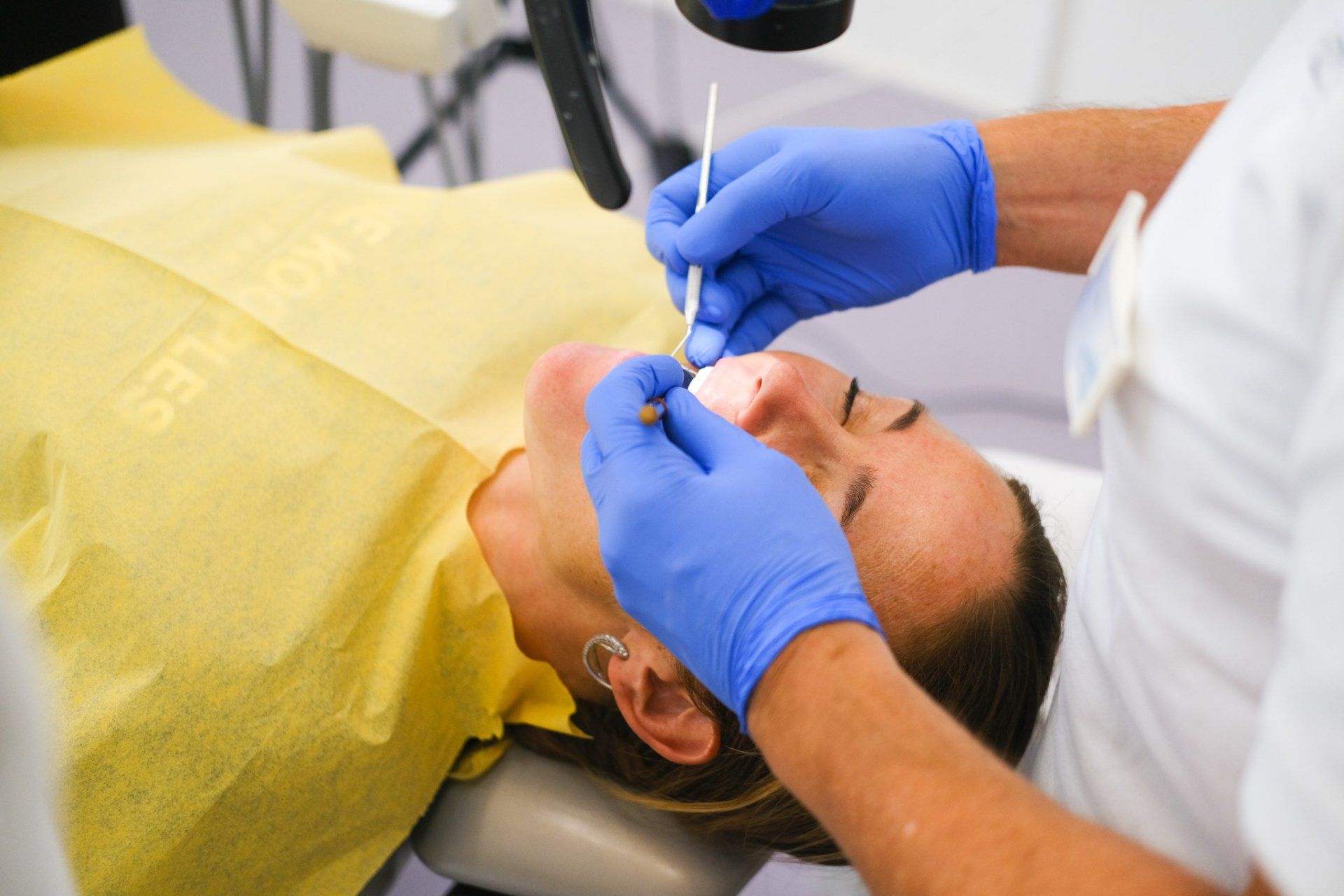Dental Implants Basel: Functional & Aesthetic Tooth Replacement for a Radiant Smile
Dental implants are a modern, permanent solution for replacing single or multiple teeth. They serve as artificial tooth roots onto which individual tooth replacements are attached. Firmly anchored in the jawbone, they offer not only a natural aesthetic but also a high level of functionality and stability.
Structure of a Dental Implant
- Implant:
The implant itself forms the foundation and serves as a replacement for the natural tooth root. For stable anchoring in the jawbone, it has a screw-like structure with a specialized thread. In most cases, implants are made from high-quality titanium, as this material integrates particularly well with bone. However, there are also metal-free ceramic implants, which are a biologically compatible option.
- Abutment:
The abutment connects the implant to the actual tooth replacement. It is firmly anchored to the implant with a small screw and serves as a stable pillar for the attached crown.
- Crown: The crown is the upper, visible part of the dental implant, functioning both aesthetically and functionally like a natural tooth. It can be made from various materials and is individually adapted.
When Are Dental Implants Used?
Whether one, several, or even all teeth are missing, dental implants provide a stable and aesthetically pleasing solution.
A Missing Tooth
A dental implant acts as an artificial tooth root, on which a crown is attached. This avoids the need to use healthy adjacent teeth as bridge supports, eliminating the need for tooth grinding. Since the implant transmits natural pressure, the jawbone remains stable.
Multiple Missing Teeth
As an alternative to removable dentures, an implant-supported bridge can be used for larger tooth gaps. Multiple missing teeth can be replaced with a continuous, stable row of teeth. The artificial teeth are visually indistinguishable from natural teeth.
Complete Tooth Loss
For those who have lost all their teeth, the All-on-4 method provides an optimal solution. This approach enables patients to receive fixed teeth without removable dentures, significantly improving their quality of life.
What Is the All-on-4 Method?
The All-on-4 method is an innovative solution for patients who have lost all their teeth. With just four implants, a fixed row of teeth can be placed, making it an excellent alternative to traditional dentures.
Treatment Procedure
A dentist places four implants into the jawbone. Two of these implants are anchored at a special angle to distribute the load evenly, creating a stable foundation for the dental prosthesis. With this method, patients often receive new, fixed teeth within a single day, which mimic natural teeth in both function and aesthetics. The procedure is performed under local anesthesia or general sedation.
Advantages of the All-on-4 Technique
A major advantage of the All-on-4 concept is the quick healing phase of approximately 3–6 months, as the implants can be loaded immediately. This solution provides superior comfort and stability compared to traditional dentures and is often suitable for patients with reduced bone mass.
Titanium or Ceramic Implants?
Choosing between titanium and ceramic implants depends on individual needs. Below, we examine the pros and cons of both materials.
Titanium Implants – Proven Stability and Fast Healing
Titanium implants have been used in implantology for decades and are known for their high stability and longevity. Through osseointegration, the implant fuses with the jawbone, ensuring a secure anchor. One major advantage is the relatively short healing time—full loading is possible within six weeks to three months. Additionally, titanium implants are highly durable.
Ceramic Implants – Metal-Free Biocompatibility
Ceramic implants offer a metal-free alternative, making them ideal for patients with allergies or sensitivities. They also provide excellent light transmission and color matching, making them attractive for aesthetic preferences. However, ceramic implants require special surface treatment, and their healing time is longer—up to five or six months. Long-term studies on durability and aging are still limited.
Conclusion: While titanium excels in robustness and fast healing, ceramic implants are favored for their compatibility. The choice depends on individual needs and medical conditions—consulting a specialist helps determine the best option.
The Path to a New Implant
The treatment is carried out in multiple steps to ensure optimal integration and a perfect fit. Below is a detailed description of these steps:
1. Consultation and Examination
The first step is a detailed consultation with the dentist or implantologist. The current condition of the teeth, any pre-existing conditions, and individual preferences are discussed. Additionally, an initial examination of the jaw is conducted to determine the best options for placing a dental implant.
2. Three-Dimensional Imaging
For precise planning, state-of-the-art technology is used. A 3D X-ray allows for an exact measurement of the jawbone. This helps determine whether there is sufficient bone to support the implant or if bone augmentation is necessary. Furthermore, this procedure ensures that the dental implant fits perfectly.
3. Surgery and Recovery
The actual placement of the implant is performed through a minimally invasive procedure, usually under local anesthesia. During this process, the implant made of titanium or ceramic is firmly inserted into the jawbone. This is followed by a healing phase lasting between six weeks and several months. During this time, the implant fuses with the bone to ensure stable anchoring.
4. Placement of the Dental Prosthesis
After successful healing, the abutment is attached, and the custom-made dental prosthesis is placed. The new tooth is now not only aesthetically pleasing but also functionally capable of withstanding pressure.
5. Aftercare and Maintenance
Regular check-ups at the dental practice are essential to ensure the long-term success of the implant. Patients should also maintain careful oral hygiene. This keeps the gums healthy and ensures the implant’s longevity. Dental implants are a durable and comfortable solution for a radiant smile.
Frequently Asked Questions About Implantology
How long do implants last?
Studies show that professionally placed dental implants remain intact in 90% of patients even after 10 years. Proper oral hygiene and regular dental visits ensure longevity.
How much do implants cost?
Costs vary depending on individual circumstances. A precise estimate can only be provided after a thorough examination.
Can dental implants be rejected by the body?
Rejection is not possible. However, complications may arise if poor oral hygiene leads to implant infection, possibly requiring removal.
Is the procedure painful?
The implantation itself is performed under local anesthesia, ensuring a pain-free experience. Mild discomfort may occur post-surgery but typically subsides within a few days.









